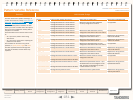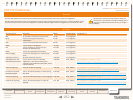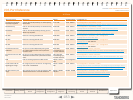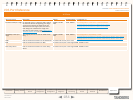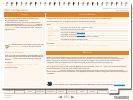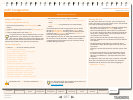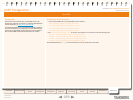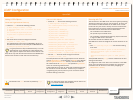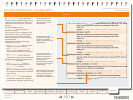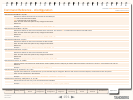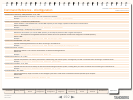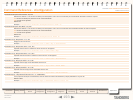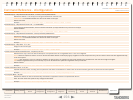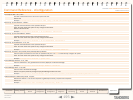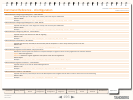
189
D14049.03
MAY 2008
Grey Headline (continued)
TANDBERG VIDEO COMMUNICATIONS SERVER
ADMINISTRATOR GUIDE
Introduction Getting Started
Overview and
Status
System
Conguration
VCS
Conguration
Zones and
Neighbors
Call
Processing
Bandwidth
Control
Firewall
Traversal
Maintenance Appendices
LDAP Conguration
Securing with TLS
The connection to the LDAP server can be encrypted by enabling
Transport Level Security (TLS) on the connection. To do this you
must create an X.509 certicate for the LDAP server to allow
the VCS to verify the server’s identity. Once the certicate has
been created you will need to install the following three les
associated with the certicate onto the LDAP server:
The certicate for the LDAP server.
•
The private key for the LDAP server.
•
The certicate of the Certicate Authority (CA) that was used
•
to sign the LDAP server’s certicate.
All three les should be in PEM le format.
The LDAP server must be congured to use the certicate. To do
this:
Edit 1. /etc/openldap/slapd.conf and add the following
three lines:
TLSCACerticateFile <path to CA certicate>
TLSCerticateFile <path to LDAP server
certicate>
TLSCerticateKeyFile <path to LDAP private
key>
The OpenLDAP daemon (slapd) must be restarted for the TLS
settings to take effect.
To congure the VCS to use TLS on the connection to the LDAP
server you must upload the CA’s certicate as a trusted CA
certicate. This can be done on the VCS by navigating to:
Maintenance > Security.
•
Adding H.350 Objects
Create the Organizational Hierarchy
Create an 1. ldif le with the following contents:
# This example creates a single
# organizational unit to contain the H.350
# objects
dn: ou=h350,dc=my-domain,dc=com
objectClass: organizationalUnit
ou: h350
Add the ldif le to the server using the command: 2.
slapadd -l <ldif _ le>
This organizational unit will form the BaseDN to which the
VCS will issue searches. In this example the BaseDN will be:
ou=h350,dc=my-domain,dc=com.
It is good practice to keep the H.350 directory in its own
organizational unit to separate out H.350 objects from
other types of objects. This allows access controls to be
setup which only allow the VCS read access to the BaseDN and
therefore limit access to other sections of the directory.
Add the H.350 Objects
Create an 1. ldif le with the following contents:
# MeetingRoom1 endpoint
dn: commUniqueId=comm1,ou=h350,dc=my-
domain,dc=com
objectClass: commObject
objectClass: h323Identity
objectClass: h235Identity
objectClass: SIPIdentity
commUniqueId: comm1
h323Identityh323-ID: MeetingRoom1
h323IdentitydialedDigits: 626262
h235IdentityEndpointID: meetingroom1
h235IdentityPassword: mypassword
SIPIdentityUserName: meetingroom1
SIPIdentityPassword: mypassword
SIPIdentitySIPURI: sip:MeetingRoom@domain.com
Add the 2. ldif le to the server using the command:
slapadd -l <ldif _ le>
The example above will add a single endpoint with an H.323 ID
alias of MeetingRoom1, an E.164 alias of 626262 and a SIP URI
of MeetingRoom@domain.com. The entry also has H.235 and
SIP credentials of ID meetingroom1 and password mypassword
which are used during authentication.
H.323 registrations will look for the H.323 and H.235 attributes;
SIP will look for the SIP attributes. Therefore if your endpoint
is registering with just one protocol you do not need to include
elements relating to the other.
OpenLDAP
For information about what happens when an alias is not
in the LDAP database see the section
Alias Origin Setting.
!
The SIP URI in the ldif le must be prexed by sip:.



